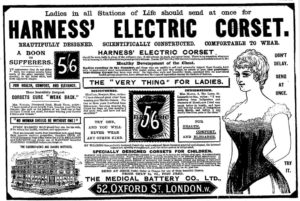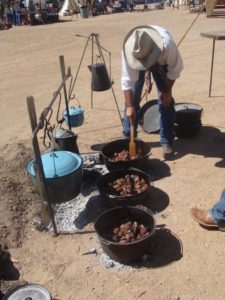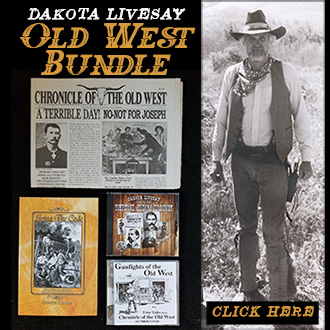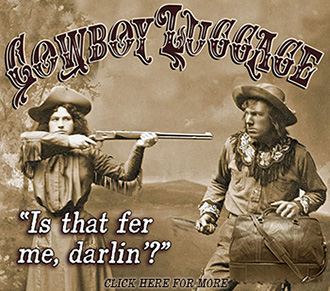 Valentine T. McGillycuddy; Army Surgeon, Agent to the Sioux, Candy Moulton, University of Oklahoma Press, (405) 325-3200, $26.95, Paperback. Biography/U.S. History, 292 pages, Map, Illustrations, Notes, Bibliography, Index.
Valentine T. McGillycuddy; Army Surgeon, Agent to the Sioux, Candy Moulton, University of Oklahoma Press, (405) 325-3200, $26.95, Paperback. Biography/U.S. History, 292 pages, Map, Illustrations, Notes, Bibliography, Index.
Valentine Trant McGillycuddy was born in 1849 in Racine, Wisconsin. His parents were shopkeepers. The boy had several siblings, and even as a child was drawn to healing the sick, practicing on the family pets. He entered the University of Michigan at age seventeen, and became a doctor at age twenty, completing medical school at the Marine Hospital of Detroit. The young doctor treated a variety of ailments from accidents and injuries to the hopeless mental conditions of patients at the Wayne County Insane Asylum.
Soon McGillycuddy’s own physical and mental conditions began to fail, and by 1870 he took some engineering courses and joined the U.S. Corps of Topographical Engineers. He headed Out West into the great outdoors to recover his health. Soon he became a cartographer and surveyor as well as physician. Tall and thin, McGillycuddy had a short beard and sharp eyes. He became a rugged outdoors man, good with fractious horses and able to withstand harsh weather conditions as he worked with various surveying crews, and to “keep warm” he became a hard drinker.
A member of the Boundary Commission in 1874, he entered the Northern Plains Indian Territory. From here it was on to the Black Hills where he met eccentric characters such as Calamity Jane tagging along with the Black Hills Expedition. In later years McGillycuddy wrote about Jane’s involvement with the expedition and we see how her imaginative legend was perpetrated as she told many whoppers to anyone who would listen.
McGillycuddy’s adventures led him deeper and deeper into the Territories where he would eventually meet Chief Red Cloud and many of the other important Indian leaders. His had dealings with General George Crook, including events swirling around the days of the Battle of the Little Bighorn. In time he was federally appointed Indian Agent to the Sioux
For a while this book concentrates mostly on all the politics surrounding the Sioux wars, military people, harangues between the generals and politicians in Washington D.C., treaties made and promises broken. All of this information is found in books written with greater detail than found here, but this one gives a quick and easy to understand evaluation of the Indian Wars problems. We wish this were told from McGillycuddy’s point of view, since many pages sometimes go by when he is not mentioned, thus he drifts into the background.
McGillycuddy had a wife named Fanny Hoyt whom he met early in his career, and who traipsed along with him as much as possible keeping a diary about army life and loneliness for a woman in the wilderness. She seemed to be a good sport however, learning to ride horseback and keeping the home fires burning. Rough housing, few female companions and harsh living conditions could not have been easy.
McGillycuddy was present at Camp Robinson the day Crazy Horse was murdered at the fort, where he demanding the dying chief be put into the adjutant’s office rather than the guardhouse.
After Fanny’s death from stroke, McGillycuddy married a second time to a woman much younger than himself who had a daughter with him and wrote his biography. McGillycuddy died in 1939. His cremated remains are buried on Harvey Peak in the Black Hills. He is much to be admired for his hard work, gumption, and straightforward dealings with those around him. He was a good husband and father.
This is a good, well-written book about a fascinating character who has been mostly overlooked by historians until now. Kudos to Candy Moulton for bringing this man to our attention. You can grab this book HERE.
Editor’s Note: The reviewer, Phyllis Morreale-de la Garza is the author of numerous books about the Old West including The Apache Kid, published by Westernlore Press, P.O. Box 35305, Tucson, Arizona 85740.
*Courtesy of Chronicle of the Old West newspaper, for more click HERE.
 May 9, 1885, Arizona Champion, Phoenix, Arizona – The Kansas City Journal tells of a game of poker played recently in that city between a Texan and Major Drumm. The Texan had no money, but plenty of cattle and an immense desire to play poker with the Major. The latter is known around the stock yards for his great natural resources, and he swept away the seemingly insurmountable difficulty by proposing a game of one steer ante, two steers come in and no limit. They played poker for cattle on this basis.
May 9, 1885, Arizona Champion, Phoenix, Arizona – The Kansas City Journal tells of a game of poker played recently in that city between a Texan and Major Drumm. The Texan had no money, but plenty of cattle and an immense desire to play poker with the Major. The latter is known around the stock yards for his great natural resources, and he swept away the seemingly insurmountable difficulty by proposing a game of one steer ante, two steers come in and no limit. They played poker for cattle on this basis.

 Valentine T. McGillycuddy; Army Surgeon, Agent to the Sioux, Candy Moulton, University of Oklahoma Press, (405) 325-3200, $26.95, Paperback. Biography/U.S. History, 292 pages, Map, Illustrations, Notes, Bibliography, Index.
Valentine T. McGillycuddy; Army Surgeon, Agent to the Sioux, Candy Moulton, University of Oklahoma Press, (405) 325-3200, $26.95, Paperback. Biography/U.S. History, 292 pages, Map, Illustrations, Notes, Bibliography, Index.
 Scald and clean the head, and boil in two gallons water with:
Scald and clean the head, and boil in two gallons water with:



